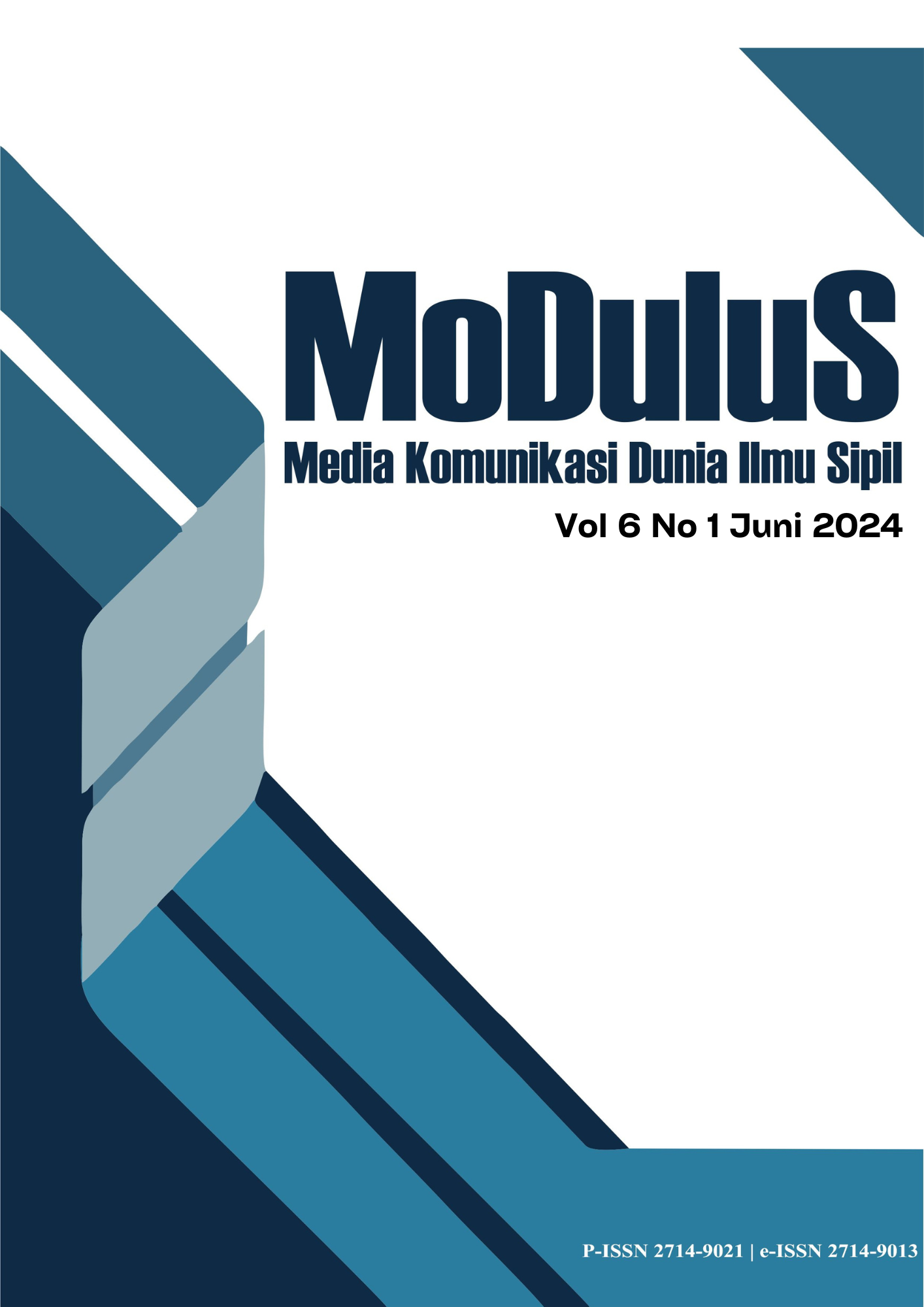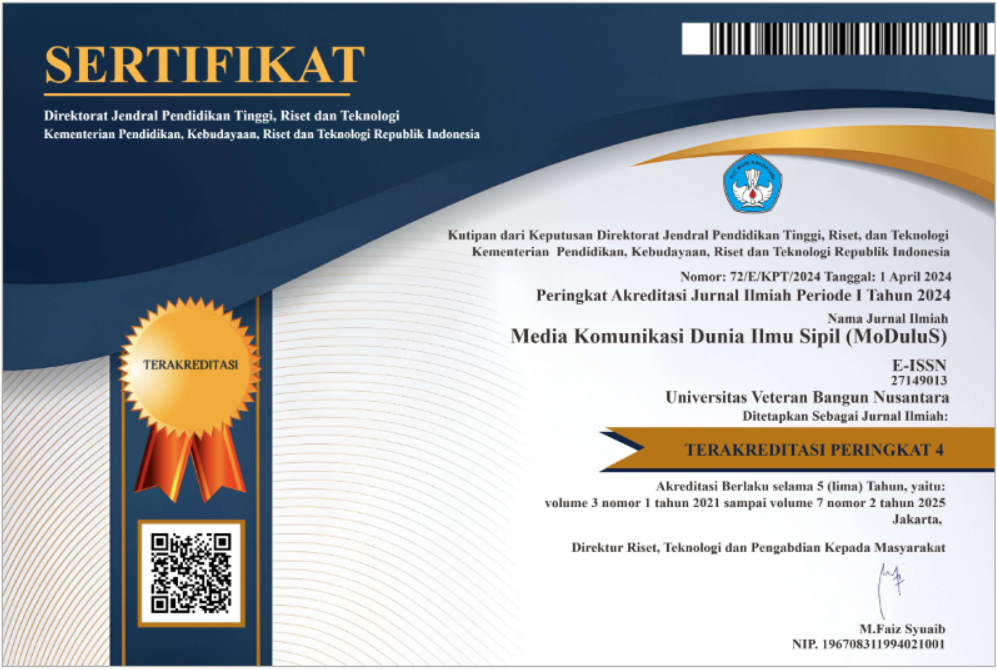Perbandingan Metode Kalibrasi Sistem Celup Dan Chamber Untuk Vibrating Wire Piezometer In Situ
DOI:
https://doi.org/10.32585/modulus.v6i1.5544Abstract
Piezometers are geotechnical monitoring instruments commonly used to obtain pore water pressure or groundwater level values. The most popular piezometer is the electric type (vibrating wire). The way this type of piezometer works is that the pore water pressure acting on the diaphragm causes a change in voltage and resonance on the vibrating wire. From the resonance of the vibrating wire will issue a frequency that will be recorded by the reading unit. This change in water force will affect the magnitude of the frequency read in the reading unit. In addition, seepage patterns, possible piping zones, and the effectiveness of seepage control used can be evaluated with the help of this tool. Currently piezometers are widely used for Monitoring embankment stability and safety, Measuring water load behind retaining walls, Assessing soil consolidation, Measurement of uplift pressure acting on structural foundations, Verification of seepage patterns and models, Monitoring slope stability, Monitoring water levels for environmental control, Assessment of tidal influence, Pump testing. Due to the importance of these instruments and their high sensitivity, it is necessary to calibrate them before installation to ensure that the equipment functions properly and accurately. Some methods of conducting in-situ calibration that are often used are the dip method and the pressurized chamber or cell method. This study will compare the two methods to determine the accuracy of the calibration implementation that can be used as a consideration for the acceptance of instruments from certain manufacturers. Based on the research that has been done, calibration with the chamber method is more accurate and acceptable after analysis. Because in its implementation it can be more thorough and there is not much external disturbance as in the dip method calibration method carried out in lakes or reservoirs where there is a lot of external disturbance.
Downloads
Downloads
Published
Issue
Section
License
Copyright (c) 2024 Mochamad Rovik, Imam Wahyudi, Rinda Karlinasari

This work is licensed under a Creative Commons Attribution-NonCommercial-ShareAlike 4.0 International License.
This work is licensed under a Creative Commons Attribution-NonCommercial 4.0 International License.
















